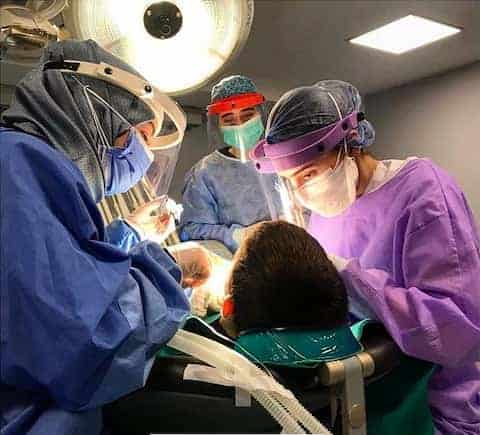Sedation is an anesthesia method used to eliminate pain, anxiety and fear that may occur during dental treatments. With the effect of sedative drugs that provide comfort and forgetfulness, the patient who is in a state of drowsiness or half-unconsciousness does not remember the content of the procedure, pain perception decreases, and unwanted intraoral reflexes are prevented. After the treatment, it eliminates the fear of the dentist and makes it easier for the patient to come to the dental treatment in the next session.
It can be performed by sniffing sedative anesthetic gas with drugs that can be applied intravenously, orally, rectally. It does not carry the risks of general anesthesia, recovery after the procedure is quick and comfortable.
It is an extremely safe anesthesia method that can be easily applied to children, adults and disabled patients who are afraid of dentists or needles, who cannot have dental treatments due to nausea, vomiting, gag reflex.
General anesthesia is the patient's being fully anesthetized and connected to the anesthesia device during the procedure under the influence of the medications given in the operating room environment and under the control of the anesthesiologist. A nasal or oral breathing tube is attached to the patient and connected to the anesthesia device. The device breathes oxygen and narcosis gas to the patient in a certain mixture until the procedure is completed. During the procedure, all vital functions of the patient are monitored instantly. In general anesthesia, there is a complete loss of consciousness, the patient in a deep sleep state does not see or hear anything, the sense of pain is completely eliminated. At the end of the procedure, the patient is awakened by appropriate methods.
General anesthesia is used for mentally handicapped individuals with communication difficulties, in surgical interventions requiring long procedure time where local anesthesia and sedation will be insufficient.
General anesthesia requires preparation before the procedure. According to the condition of the patient who is examined by the anesthesiologist, necessary tests such as ECG, lung x-ray, blood tests may be requested. Before the procedure, hunger and thirst for a certain period of time are required in adult and pediatric patients.
During sedation and general anesthesia, drug-related side effects, allergic reactions, airway difficulties and traumas can be seen. These unwanted effects can be quickly and easily eliminated under the control of an experienced team of experts. Nowadays, complications related to anesthesia are very rare when performed under appropriate conditions.
